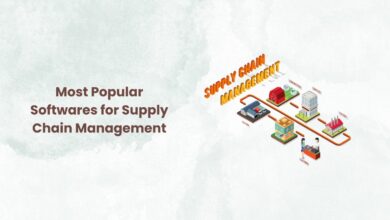Utilizing ERP to Navigate Success: Empowering Businesses for Innovation and Growth

Implementing an ERP system is essential for businesses seeking to ERP to navigate success in today’s competitive market. In the unexpectedly evolving panorama of present-day commercial enterprise, achievement is frequently synonymous with adaptability and performance. To thrive in a competitive market, agencies must continually search for progressive methods to streamline operations, decorate decision-making, and foster sustainable increases.
Enterprise Resource Planning (ERP) systems have emerged as a robust device for accomplishing those goals. In this comprehensive exploration, we delve into the arena of ERP, unravelling its myriad blessings and know-how of how it empowers agencies for innovation and boom.
Understanding Enterprise Resource Planning (ERP)
At its core, ERP is a suite of integrated software program programs that allow companies to control and automate numerous enterprise features, from finance and human resources to delivery chain and patron relationship control.
These systems provide a centralized database that houses a wealth of statistics, facilitating seamless communication and statistics sharing across extraordinary departments. ERP correctly breaks down organizational silos, fostering collaboration and efficiency.
The Evolution of ERP
The records of ERP date back to the Sixties, whilst early iterations were generally used for inventory control and manufacturing planning. Over the decades, ERP Software USA have gone through a significant evolution, expanding their abilities and adapting to the changing desires of corporations.
Today’s ERP solutions are sophisticated and customizable and can address various enterprise challenges. They contain advanced technologies like synthetic intelligence, records analytics, and cloud computing, which similarly decorate their functionality and agility.
The Role of ERP in Empowering Business
1. Streamlining Operations
One of the essential goals of ERP is to streamline operations. Presenting a unified platform for various commercial enterprise features eliminates redundancies and inefficiencies, which can arise when special departments use disparate systems or manual techniques. This streamlining effects in cost financial savings and improved productivity.
For instance, ERP structures assist in optimizing production schedules, controlling stock tiers efficaciously, and decreasing lead times. In finance, they automate accounting strategies, ensure compliance with regulatory necessities, and offer actual-time economic reporting.
2. Enhancing Decision-Making
Records are a precious commodity in the virtual age, and ERP Software are a treasure trove of particular records. These systems gather information from unique sides of the corporation, collate it, and gift it in an understandable layout. This information-pushed technique gives decision-makers insights into the company’s performance, traits, and regions that want interest.
For instance, an ERP gadget can offer actual-time income information, helping income managers discover which products act nicely and which markets require extra interest. Similarly, ERP can signal inventory levels and provider performance in delivery chain management, allowing proactive decision-making.
3. Improving Customer Relationship Management
A key motive force of enterprise success is customer satisfaction. ERP Software frequently include (Customer Relationship Management) CRM software USA modules centralizing consumer records. This permits agencies to gain a holistic view of their clients, including their preferences, purchase history, and communication records.
With these facts comfortably, corporations can customize their interactions, anticipate customer desires, and provide advanced service. Moreover, CRM functionality inside ERP Software can automate advertising and marketing campaigns, income tracking, and customer service, ensuring a steady and positive patron experience.
4. Facilitating Scalability
In the latest dynamic enterprise surroundings, Scalability is vital. ERP structures are designed to house the boom by allowing businesses to feature new customers, features, or modules as wanted. This Scalability guarantees that the ERP gadget can evolve alongside the enterprise, helping growth into new markets or diversification of product traces.
Cloud-primarily based ERP solutions have become increasingly famous due to their flexibility and Scalability. They allow corporations to access their ERP Software from anywhere, making managing far-off groups or branch offices less complicated.
5. Ensuring Compliance and Risk Management
Regulatory compliance is a complex and vital issue of modern-day enterprise operations. ERP structures often contain modules that help groups adhere to enterprise-specific rules and inner policies. These modules automate compliance reporting, track policy changes, and ensure that personnel follow mounted protocols.
Furthermore, ERP structures contribute to change management by supplying visibility into potential risks and vulnerabilities. Businesses can use those insights to cope with problems proactively, set up contingency plans, and decrease the likelihood of high-priced compliance violations or safety breaches.
Innovation and ERP: A Symbiotic Relationship
Innovation is the lifeblood of any successful enterprise. It’s approximately finding new and higher approaches to clear up issues, create fees, and stay ahead of the opposition. ERP structures play a pivotal function in fostering innovation inside organizations in numerous methods.
1. Data-Driven Innovation
Innovation often starts with facts. ERP Software accumulate, shop, and analyze many points from diverse business tactics. This information may be a goldmine of insights that fuel innovation. For instance:
- Market Insights: By reading income records, groups can pick out rising marketplace traits and convert patron possibilities, mainly to improving new products or services.
- Operational Efficiency: Data analytics within ERP structures can pinpoint bottlenecks in manufacturing or delivery chains, allowing groups to innovate by optimizing procedures.
- Cost Reduction: Data can reveal immoderate spending or waste regions, allowing corporations to innovate by finding value-powerful alternatives.
2. Agility and Flexibility
Innovation often requires experimentation and adaptation. ERP Software, specifically cloud-based ones, provide the agility and versatility essential for investigation without main disruptions to ongoing operations. Businesses can easily upload new modules or functionality to check revolutionary thoughts, and if a hit, scale them up quickly.
3. Collaboration and Knowledge Sharing
Innovation prospers in environments that inspire collaboration and information sharing. ERP Software spoil organizational silos by supplying a centralized platform for information and communication. Teams can collaborate on initiatives percentage facts, and get entry to real-time records, facilitating the change of ideas and fostering a tradition of innovation.
4. Integration with Emerging Technologies
Innovations in technology, consisting of synthetic intelligence (AI), Internet of Things (IoT), and blockchain, have the potential to revolutionize commercial enterprise methods. Many modern-day ERP Software contain rising technology or offer APIs for seamless integration. This allows companies to leverage the strength of these technologies to create modern answers that decorate customer studies, streamline operations, or open new sales streams.
5. Continuous Improvement
Innovation isn’t a one-time event; it’s an ongoing procedure. ERP Software help non-stop improvement by imparting gear for tracking and measuring performance. Businesses can set Key Performance Indicators (KPIs) and use ERP statistics for music development. If the information reveals deviations from desired results, agencies can innovate by imposing corrective measures or exploring new strategies.
Real-World Success Stories
To illustrate the real-global impact of ERP in empowering businesses for innovation and growth, let’s examine some success testimonies:
1. Amazon: Optimizing Operations and Expanding Horizons
Amazon, one of the world’s largest e-commerce giants, relies heavily on ERP Software to manage its complex supply chain and logistics operations. The company’s success isn’t only due to its client-centric technique but also its potential to optimize operations and amplify into new markets unexpectedly.
Amazon’s ERP gadget offers real-time visibility into stock ranges, order processing, and shipping schedules. This allows the business enterprise to fulfil client orders correctly and decrease shipping times. Additionally, Amazon’s use of records analytics inside its ERP device enables pick-out shopping for trends and advise merchandise to clients, driving income and client pleasure.
Furthermore, Amazon’s non-stop innovation, such as its foray into cloud computing via Amazon Web Services (AWS), become made viable with the aid of the Scalability and flexibility of its ERP infrastructure. This strategic diversification has fueled innovation and contributed appreciably to Amazon’s growth.
2. Tesla: Revolutionizing the Automotive Industry
Tesla, the electrical automobile (EV) pioneer, has disrupted the car industry with its progressive EV generation and sustainable strength solutions. At the heart of Tesla’s operations is an advanced ERP device that manages everything from manufacturing and making plans to customer service.
Tesla’s ERP device enables the company to:
- Precisely manage its complex delivery chain for batteries and automobile additives.
- Monitor manufacturing in actual time to make sure it is friendly and efficient.
- Analyze client facts to improve car capabilities and overall performance.
- Automate over-the-air software updates for automobiles.
This integration of ERP with the modern-day generation has now not only effectively allowed Tesla to innovate inside the electric powered car space but additionally placed the employer as a leader in autonomous riding and renewable strength solutions.
3. Nestlé: Ensuring Food Safety and Compliance
Nestlé, one of the world’s largest meals and beverage groups, strongly emphasizes meal protection and compliance with enterprise guidelines. Its ERP device plays a vital function in accomplishing those goals by way of:
– Tracking the origins of raw materials to ensure excellence and safety.
– Automating compliance reporting for various food safety standards.
– Managing complex worldwide delivery chains to decrease disruptions.
By preserving rigorous meal safety requirements and regulatory compliance, Nestlé now not only innovates in product development but also earns the agreement of purchasers internationally, contributing to its persistent increase and achievement.
Overcoming Challenges in ERP Implementation
While the potential benefits of ERP structures are substantial, implementing them can be complicated. Organizations often stumble upon challenges, including:
1. Cost and Resource Allocation
ERP implementation may be aid-in-depth regarding giant upfront fees and devoted IT and workforce sources. However, groups have to view ERP as a long-term investment that yields sizable returns in phrases of performance and increase.
2. Change Management
Adopting ERP Software frequently calls for employees to alternate their work strategies. Resistance to alternatives is commonplace, and corporations should put money into exchange control strategies to ensure a smooth transition.
3. Customization and Integration
ERP structures have to align with an organization’s particular needs. Customization and integration with current facilities may be essential but require cautious planning and execution.
4. Data Migration
Transferring present facts to the brand-new ERP system may be complicated. Data quality and accuracy are critical for the achievement of the implementation.
5. Training and User Adoption
Employees need the proper training to use the ERP device effectively. User adoption is critical for knowing the total capacity of ERP.
- UPI-PayNow Linkage: A Boon for Businesses and Tourists
- Tips for Businesses and Entrepreneurs during WhatsApp Number Bans
- Private Cloud Data Storage: Is It the Right Choice for Your Business?
Conclusion
In dynamic and competitive business surroundings, fulfilment hinges on adaptability, efficiency, and innovation. Enterprise Resource Planning (ERP) systems are imperative equipment that empowers businesses to streamline operations, decorate selection-making, and foster increase. Their position in creation can be balanced, as they provide the information, flexibility, collaboration, and integration required to force innovative answers and stay ahead of the opposition.
The fulfilment tales of Amazon, Tesla, Nestlé, and endless different organizations underscore the transformative power of ERP structures when successfully carried out and included in enterprise techniques.
As groups continue to conform and include virtual transformation, ERP structures will remain at the forefront of innovation and boom. Their potential to centralize statistics, facilitate communique, and adapt to changing circumstances positions them as critical property for groups of all sizes and industries.
Navigating fulfilment in a trendy business landscape requires the right strategies and gear. ERP structures are not just equipment; they may be the compass that guides corporations towards performance, innovation, and sustained increase. Embracing ERP is not simply a preference; it’s a strategic imperative for individuals seeking to thrive in the ever-changing international commercial enterprise.






